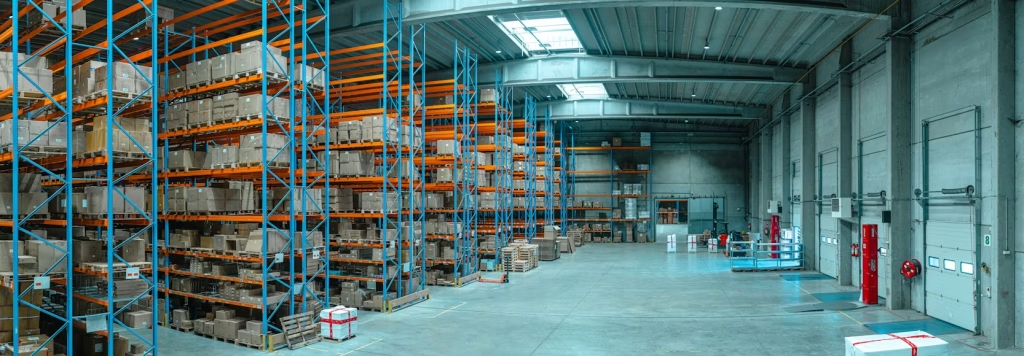The Challenge for OEMs: Fragmented Supply Chains Increase Risk
In today’s manufacturing environment, OEMs are under constant pressure to reduce lead times, improve product quality, and simplify complex global supply chains. Yet many still rely on separate vendors for roll forming, stamping, welding, powder coating, and final sub-assembly. This fragmented approach often leads to:
- Miscommunication between suppliers
- Inconsistent tolerances and finishes
- Delays caused by freight, rework, or process handoffs
- Higher total landed cost
When every phase of metal fabrication is managed by a different vendor, the result is often longer timelines, variable quality, and limited traceability — all of which pose risks to production schedules and end-user satisfaction.
The Opportunity: Integrated Metal Fabrication with Sub-Assembly
Consolidating metal forming, finishing, and sub-assembly under a single supplier offers significant operational advantages. By working with a vertically integrated partner, OEMs gain:
- A single point of accountability
- Tighter process control
- Reduced coordination time
- Improved part consistency and fit
For sourcing and engineering teams, this means fewer purchase orders, less logistics overhead, and a stronger supply chain that delivers better results with fewer variables.
Design Collaboration That Saves Time
Engaging a metal fabrication partner early in the design phase allows for optimized manufacturability — minimizing late-stage changes, excess costs, and preventable production delays. Suppliers with in-house forming and sub-assembly capabilities can provide actionable DFM (Design for Manufacturability) feedback that reduces complexity across stamping, roll forming, and welding.
With early collaboration, OEMs often see improvements in:
- Part consolidation (reducing BOM count)
- Bracket geometry optimized for faster assembly
- Material selection that balances performance and cost
This kind of partnership shortens development cycles while supporting long-term scalability.
Precision Metal Forming, One Partner
Metal forming is at the core of most structural sub-assemblies. When stamping, roll forming, and hydroforming are executed under one roof, OEMs benefit from:
- Tighter dimensional control across mating components
- Reduced tolerance stack-up issues
- Aligned tooling and inspection standards
Whether the project involves appliance frames, data center support rails, or heavy-truck structural components, using one supplier for all metal forming stages ensures better fit, form, and function — without compromise.
Value-Added Operations That Streamline the Supply Chain
Beyond forming, in-house secondary operations like welding, powder coating, and riveting can dramatically reduce waste and lead time. When these capabilities are built into the same production facility, parts flow directly from forming to finishing without delays, damage risk, or costly packaging and transit.
Integrated providers can also:
- Control finish consistency across parts
- Apply quality standards throughout the process
- Perform functional testing and validation on the full sub-assembly
The result: leaner production, less freight, and faster go-to-market readiness.
Consistency and Accountability
One of the most overlooked advantages of integrated metal fabrication is consistent quality assurance. With all processes happening within a single facility — from stamping to powder coating to assembly — quality plans can be applied uniformly.
This allows for:
- Better traceability
- Real-time process adjustments
- Simplified audits and documentation
- Reduced defects and rework
Manufacturers following Lean or Six Sigma principles will find this integration supports continuous improvement and waste elimination across the value stream.
A Partner Who Builds More Than Parts
Integrated fabrication isn’t just about consolidation — it’s about smarter production. A supplier that manages forming, finishing, and sub-assembly can deliver:
- Lower total cost of ownership
- Faster production ramp-up
- Fewer quality concerns and supplier disputes
- End-use-ready assemblies that drop into final product builds
Common examples include:
- Appliance brackets and frames that arrive fully coated and assembled
- Heavy-truck chassis reinforcements with structural welding included
- Data center mounting systems built to tight tolerances and airflow specs
This approach reduces operational friction and provides engineering teams with components they can trust from the first build to full-scale production.
Conclusion: Why Integrated Fabrication Supports OEM Efficiency
For OEMs navigating today’s fast-paced, cost-sensitive markets, integrated metal fabrication offers clear advantages. A supplier who combines metal forming, finishing, and sub-assembly under one roof provides not just parts — but complete solutions that reduce complexity, improve reliability, and support long-term program success.
About Mills Products
Mills Products is a North American contract manufacturer specializing in roll forming, stamping, welding, powder coating, and sub-assembly services. With production facilities in the U.S. and Mexico, Mills delivers scalable, engineered metal solutions for leading OEMs in the appliance, automotive, heavy-truck, and data center industries.
